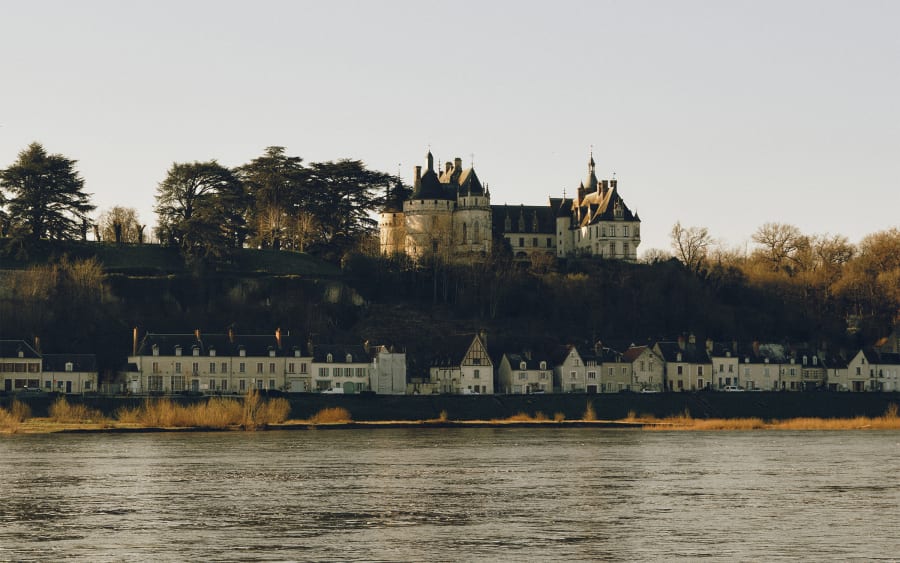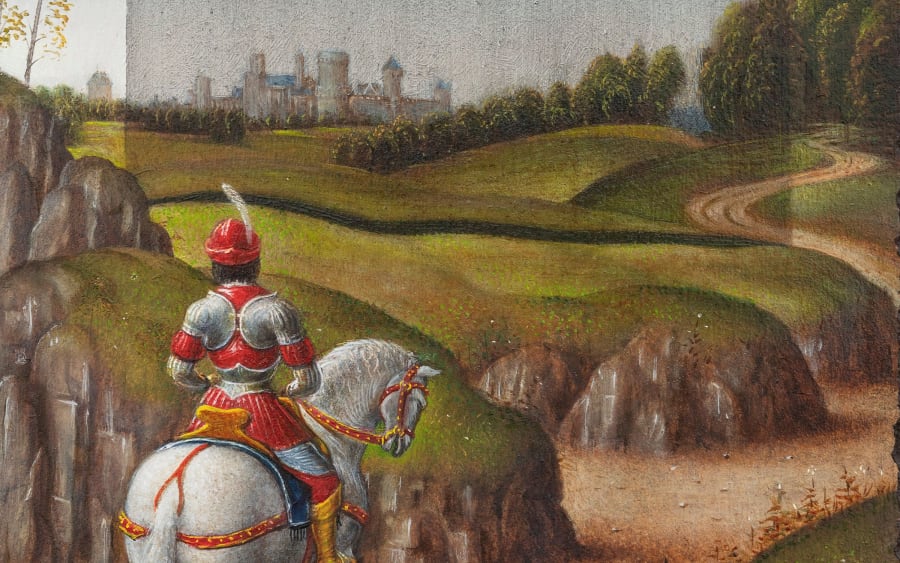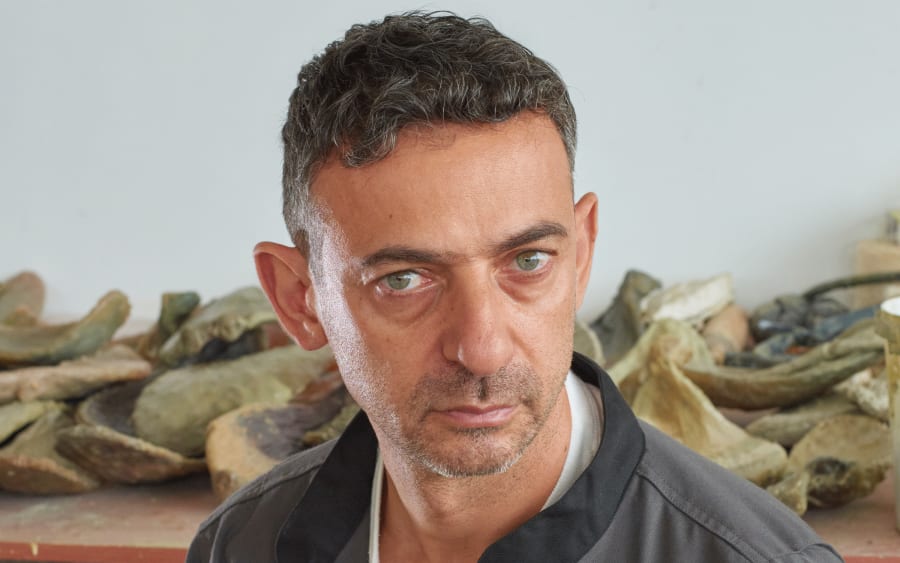‘Ultimately, what I want is a psychedelic encounter,’ Mark Leckey tells me, as he sits drinking tea (milk, no sugar) at the kitchen table of his north London home. The British artist – who works across film, sculpture, and performance – is describing the installation plan for his forthcoming solo exhibition at Lafayette Anticipations in Paris, which will bring together around 20 artworks spanning his career, from the late 1990s to today. The show’s title, ‘As Above So Below’, is borrowed from an ancient Hermetic aphorism, later popularized by the 19th-century mystic Madame Blavatsky. In the context of Leckey’s work, it suggests not only a correspondence between different planes of existence (Heaven and Earth, say, or the virtual and the real), but also that hierarchical distinctions between high and popular culture are ultimately illusory. The artist takes another sip of tea. ‘I hate the idea that a work of art’s meanings can be unpacked and read like runes. I just want you to have an experience in the midst of this thing.’
Leckey first came to the attention of the art world with his seminal video Fiorucci Made Me Hardcore (1999). Due to feature in his Lafayette Anticipations show, this 15-minute film is comprised of found, often-amateur footage of young, sharply-dressed, working-class Britons roaming the streets and gathering on dancefloors in the latter decades of the 20th century, shot at locations ranging from 1970s Northern Soul clubs to early-1990s raves. Using cutting-edge, digital-editing software, and adding a mashup soundtrack of his own composition, the artist sequenced these analogue clips into a woozy, wistful, oddly haunting history of the long Thatcher years, in which dance music offered up the promise of escape into euphoric pleasure – or oblivion. Seen today, Fiorucci Made Me Hardcore anticipates many of the concerns that shape his later oeuvre: pop culture, social class, emergent technologies, nostalgia, and, perhaps above all, what we might term an aching for the boundless, the transcendent. Leckey has described the film as ‘a ghost story,’ not least because some of its anonymous subjects are now likely dead. The artist, here, functions not as an archaeologist, but as a medium, attempting to contact shades from a disappeared past through the Ouija board of his editing deck.
Over the years, Leckey has been described variously as an artist’s artist, a British visionary in the tradition of William Blake, and a 21st-century shaman – the latter in response to GreenScreenRefrigerator (2010), a project that saw him attempt to inhabit the persona of a black Samsung smart fridge by huffing its intoxicating coolant. ‘I always want to be intimate with something,’ he tells me, citing his performance Big Box Statue Action (2003) at Tate Britain, in which he communed with the alabaster mass of Jacob Epstein’s sculpture Jacob and the Angel (1940–1941) by blasting it with music from a towering stack of speakers. His intention wasn’t to ‘understand Epstein’s work in an intellectual way,’ but rather ‘through gnosis.’ He explains that he ‘wanted an authentic encounter’ with the sculpture, but what complicated this was that we ‘exist in a world of representation, of symbols. For me to stand naked in front of it wasn’t enough. I had to mediate the experience, and going through the sound system allowed me to access it.’
Employing sometimes oblique means to forge genuine, deeply felt, even transformative connections – whether with cultural artifacts, landscapes, or episodes from his own life – is a thread that runs through Leckey’s art. Witness DAZZLEDARK (2023), a CGI-heavy film featuring a rainbow unicorn plushy gazing into the abyss of a dark, churning sea; or Under Under In (2019), a video which returns to a motorway flyover in the Wirral, North West England, beneath which as a child he had what he believes was a supernatural encounter with a sprite. The artist says that ‘with everything I’ve made, I wanted to arrive at some release, some kind of ecstatic moment […] Ecstasy in its original meaning is being taken out of yourself, pulled out of the familiar and the knowable in a bewildering, terrifying, or I guess awesome way. That feels like the whole world at the moment. The whole world is kind of in the throes of ecstasy.’
How, then, to navigate our times? ‘It sounds very grand, but medieval metaphysics seems to me to make sense of now. Going back to something before rational Western thought, essentially, into another realm that includes the transcendent, that hasn’t rationalized it out of existence. ‘During lockdown, I was looking at a lot of medieval Italian painting, where it’s coming out of the quite rigid, Byzantine style.’ For Leckey, something precious was lost when quattrocento artists began to focus on ‘linear perspective and start to dissect bodies to figure out anatomy.’
Leckey’s research into the dreamy, sacral art of the pre-Renaissance period informed a group of works shown in his solo exhibition ‘3 Songs from the Liver’ at Gladstone Gallery, New York, earlier this year. One of these, the video Carry Me into the Wilderness (2022), opens with a shot of a candlelit, heavily gilded painting of an empty hermit’s cave, digitally adapted from a work by the Sienese artist Lorenzo Monaco. Next, we’re presented with blurry-to-the-point-of-illegible smartphone footage of the artist’s first walk in his local park following the lifting of COVID-19 lockdown restrictions. ‘I can’t bear it,’ he breaths into the mic, utterly overwhelmed, as though he were not wandering through a drab, municipal recreation ground, but rather some sublime mountain fastness. ‘I just walk out into the wilderness, and I just well up…Oh Jesus, Oh God…’ Leckey tells me that he’d ‘entered into a divine space, a kind of sacramental reality. At the time, I knew I had to record it, and I thought the instinct was artistic. But then I became suspicious, and started thinking: well, this is just what people do now, convert experience into information.’
That contemporary impulse – which has made trillions of dollars for Silicon Valley firms, while radically rewiring our ways of seeing and being – was behind a found smartphone clip that forms the basis of Leckey’s To the Old World (Thank You for the Use of Your Body) (2021), a video that also featured in this year’s Gladstone show, and will appear at Lafayette Anticipations. Posted on a social-media channel devoted to ‘bantz’ (laddish humor), the original footage documents a young British man running towards a bus shelter and diving headfirst through its glass. To the Old World… replays the scene over and over again, subjecting it to a succession of edits, as though both incanting a spell and annotating a holy text. For Leckey, this cartoonish, clout-chasing stunt might be imagined as a bid to ‘break through the immanent frame’ – a strictly secular and materialist understanding of reality. Through staging and disseminating the clip, the youth transformed an image culture in which he had ‘no agency’ into one in which he has ‘potential: for chaos, for ecstasy, for invoking the god Pan or something…’ And what lies on the other side of the glass? The artist laughs. ‘I don’t know. Maybe just the void.’
Following his Paris show, Leckey wants ‘to make a horror film’ exploring a central tenet of Christian iconoclasm, that ‘all representation is diabolical […] I just started thinking: yes, it’s true; images do have some demonic power to them, which is increasing. The more they proliferate, the more demonic they seem.’ Looking over his work, it’s hard to imagine a more perfect project for the artist. Bring the horror on.
Mark Leckey is represented by Galerie Buchholz (Berlin, Cologne, New York), Cabinet (London), and Gladstone Gallery (Brussels, Los Angeles, New York, Seoul).
‘Mark Leckey: As Above So Below’ opens at Lafayette Anticipations, Paris, on April 2, 2025.
Tom Morton is a writer and curator based in Rochester, UK. He is a regular contributor to Art Basel Stories, ArtReview, and frieze, and is curator of the exhibition ‘A Room Hung With Thoughts: British Painting Now’ at the Green Family Art Foundation, Dallas, Texas (until May 11, 2025).
Published on April 1, 2025.
Caption for header image: Mark Leckey, The Old Road Leads to the Future II (detail), 2025. Courtesy of the artist.


